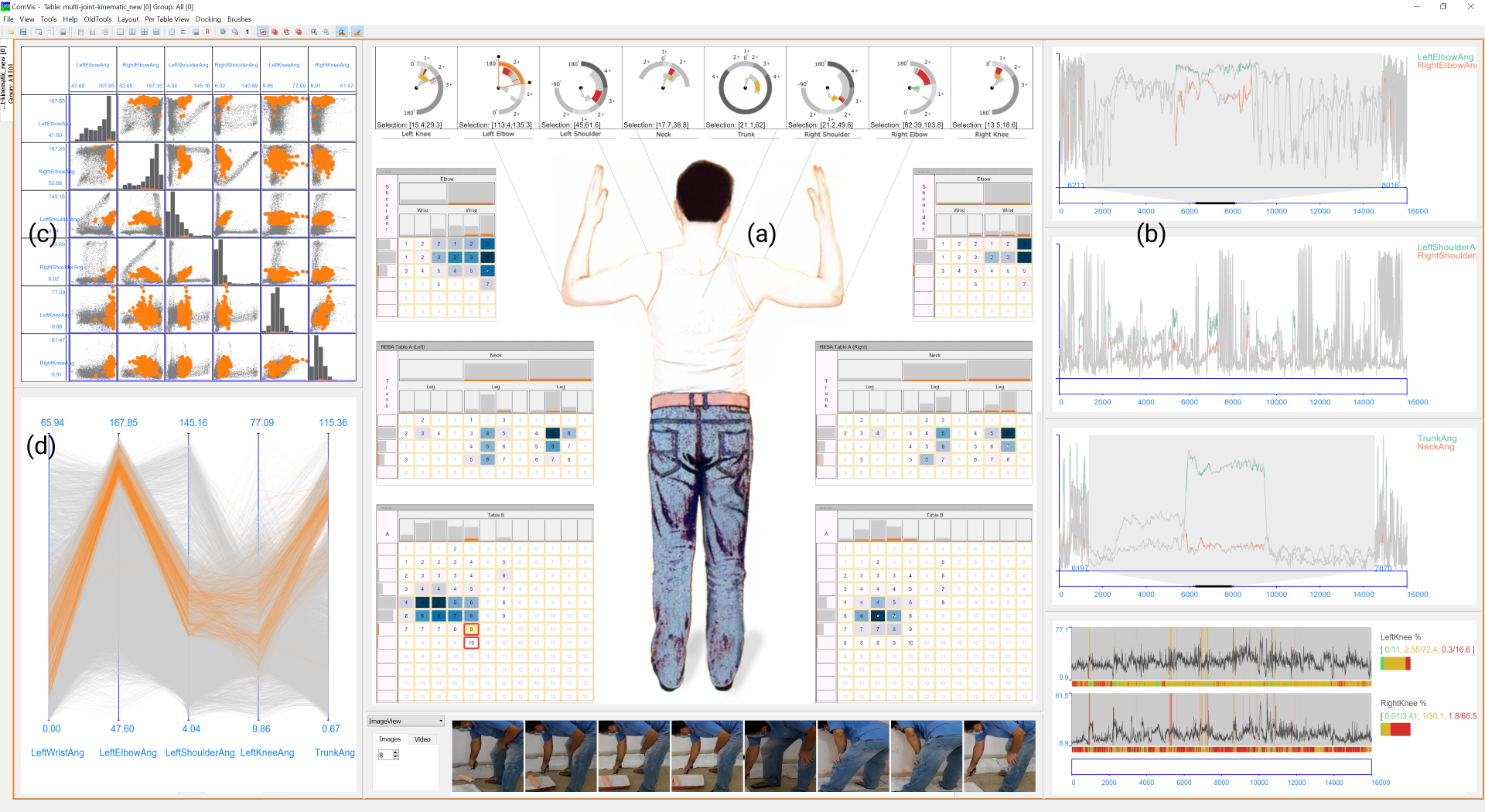ErgoExplorer: Interactive Ergonomic Risk Assessment from Video Collections
Manlio Miguel Massiris Fernandez, Sanjin Rados, Eduard Gröller, Claudio Delrieux, Kresimir Matkovic
View presentation:2022-10-19T14:00:00ZGMT-0600Change your timezone on the schedule page
2022-10-19T14:00:00Z

Prerecorded Talk
The live footage of the talk, including the Q&A, can be viewed on the session page, Decision Making and Reasoning.
Fast forward
Abstract
Ergonomic risk assessment is now, due to an increased awareness, carried out more often than in the past. The conventional risk assessment evaluation, based on expert-assisted observation of the workplaces and manually filling in score tables, is still predominant. Data analysis is usually done with a focus on critical moments, although without the support of contextual information and changes over time. In this paper we introduce ErgoExplorer, a system for the interactive visual analysis of risk assessment data. In contrast to the current practice, we focus on data that span across multiple actions and multiple workers while keeping all contextual information. Data is automatically extracted from video streams. Based on carefully investigated analysis tasks, we introduce new views and their corresponding interactions. These views also incorporate domain-specific score tables to guarantee an easy adoption by domain experts. All views are integrated into ErgoExplorer, which relies on coordinated multiple views to facilitate analysis through interaction. ErgoExplorer makes it possible for the first time to examine complex relationships between risk assessments of individual body parts over long sessions that span multiple operations. The newly introduced approach supports analysis and exploration at several levels of detail, ranging from a general overview, down to inspecting individual frames in the video stream, if necessary. We illustrate the usefulness of the newly proposed approach applying it to several datasets.